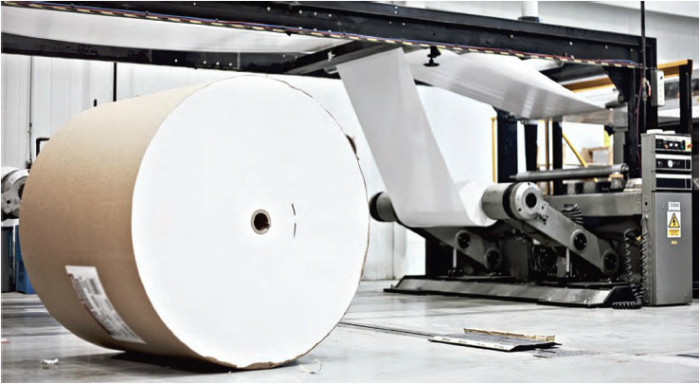
The country’s biggest paper merchant Spicers saw a 3.7 per cent drop in sales revenue at $195.2m for the first six months of the year, last year revenue was clocked in at $202.6m.
However EBIT was steady with the previous year at $3.3m, versus $3.2m for the previous year, up by 1.6 per cent, with statutory profit steady at $3.6m.
Spicers says the biggest drop was in Australian commercial print market and was due to ‘ongoing structural decline and challenging trading conditions’, and without growth in other areas Spicers revenue drop would have been more than 3.7 per cent.
There was solid growth in diversified revenue streams, with strong contributions from the sign and display and pressure sensitive labels product categories.
David Martin, CEO, Spicers says, “While trading conditions in our core commercial print markets continue to be challenging, particularly in Australia, we have been able to maintain overall group earnings with good results from the New Zealand and Asian businesses.”
Spicers says weakness in the underlying EBIT came about due to the Australian business offset by good results in New Zealand and Asia. The Australian business was down 29.3 per cent.
Underlying corporate costs fell by 4.3 per cent compared to the previous year’s result. Spicers expects these costs to reduce further should the proposed transaction simplifying the company’s capital structure and wind-up the PaperlinX SPS Trust be successful.
[Related: Spicers plan to end shareholder deadlock]
Net cash inflow from operations was $0.2m, compared to the outflow of $22.3m for the PCP. This turnaround was due to a consistent management focus on working capital performance, with inventory levels tightly controlled ad creditor terms improved with key suppliers.
Profit after tax from continuing operations of $1.4m was consistent with PCP, while PAT on discontinued operations of 2.2m arose, this was due to the groups previous operation in Germany.
Martin says, “I am pleased that a sharp focus on working capital management, including improvement of credit terms with key suppliers, has enabled us to report a positive operating cash flow result during a period where cashflows are typically weaker due to seasonal factors.”
Our changed approach to portfolio segmentation has delivered focus on both working capital improvement and future growth opportunities. We are focused on maximising returns in our commercial print and packaging markets, while driving profitable revenue growth in sign and display and other diversified categories.”
Comment below to have your say on this story.
If you have a news story or tip-off, get in touch at editorial@sprinter.com.au.
Sign up to the Sprinter newsletter
